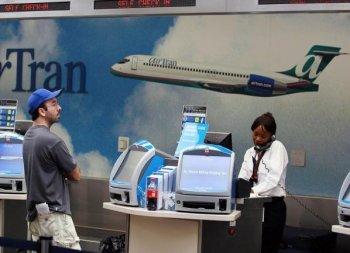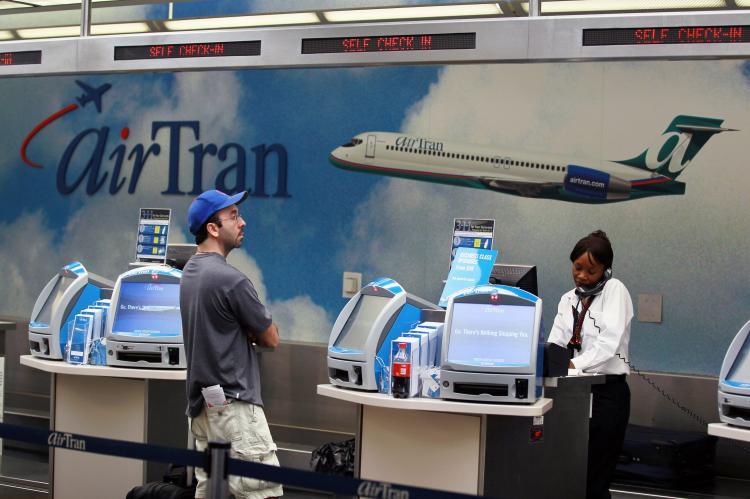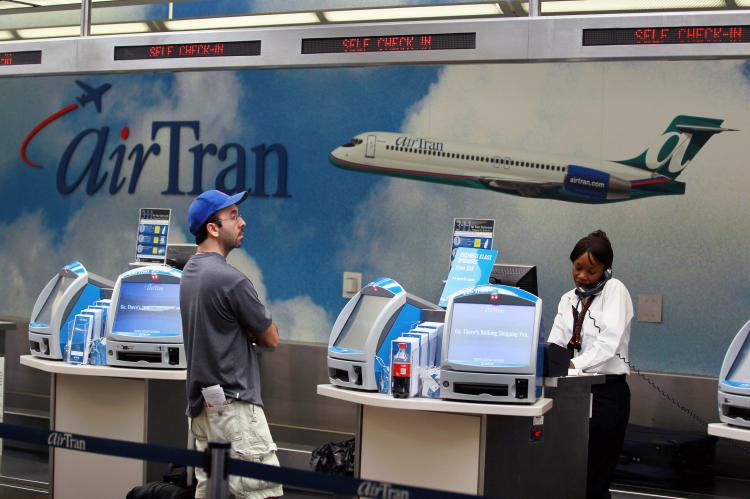WASHINGTON—Prices for traveling have been increasing, a troubling development for a travel industry that already has been hit hard by economic upheaval and various natural and man-made disasters, according to the U.S. Travel Association.
The Travel Price Index (TPI) went up by 2.8 percent in September, when compared to the same month in 2009. In large part, this increase was attributed to increases in airline transportation costs for people and goods, which increased by 6.1 percent, and fuel costs, which increased by 5.4 percent.
Costs are rising and the association predicts that by 2013, travel costs to the traveler will increase by 12.4 percent, with costs to the travel industry increasing by 9 percent, allowing for a 3.4 percent profit.
Travel Industry Disasters
The Gulf Coast disaster affected almost every industry, but none more than the travel industry, which already had been hit hard by economic upheaval.
“Indications suggest that among all these jobs, those in travel and tourism, commercial fishing, and oil and gas drilling are particularly affected by the spill,” according to the “America’s Gulf Coast” report, submitted to President Barack Obama by Ray Mabus, secretary of the Navy, in September.
Tourism was flourishing and global and domestic travel brought around 1.7 million people to the five Gulf states in 2008 alone, resulting in approximately $145 billion in earnings during that period.
“Based on the number of people employed in the travel and tourism industry, approximately one third of total tourism dollars, or about $51 billion, were spent in the coastal counties,” according to the report.
The report states that many people working for the travel industry, including hotel workers, waiters, and waitresses, earn wages that are already below the poverty line. When the travel industry suffers, these people join the unaccounted-for unemployment ranks, as most are not part of the unemployment insurance system, so they aren’t receiving unemployment benefits.
Small businesses—firms with fewer than 500 employees that cater to the travel industry and account for 97 percent of all businesses in the five Gulf states—were already hard hit by the economic downturn. Many of such businesses had to lay people off, close doors, or declare bankruptcy.
A small section in the report speaks of the difficulty in quantifying the actual travel industry losses, such as employment and revenue, as most businesses do not only cater to the travel industry, but also support local events and other needs.
Making sure that the travel industry picks up speed and that tourism will flourish again in the Gulf states, the RestoreTheGulf.gov website established by the U.S. government includes a section on travel resources.
The website “includes links to general information on Gulf tourism as developed by the states themselves, as well as links to state-publicized information on beach and coastal conditions to properly inform travelers as they select their Gulf coast destinations.”
[xtypo_dropcap]B[/xtypo_dropcap]P Plc, the global oil and gas firm, has pumped so far a total of $87 million into four Gulf states to bring in tourism ($22 million in Alabama, $32 million in Florida, $15 million in Louisiana, and $18 million in Mississippi), a small portion of the $20 billion fund set up for damage claims.
“We understand the Governors’ concerns for the impact on the tourism industry, and are making funds available so that they can support the industry’s efforts to provide accurate information about the state of the beaches across the region,” former BP CEO Tony Hayward announced in a mid-2010 press release.
Taking the Offensive
The travel industry is on the offensive. The U.S. Travel Association and other travel industry representatives have been lobbying extensively with the sitting U.S. administration.
“The last two years have been tough for the travel sector. But now is the time to think about how the industry will change over the coming years,” said Philippe Chérèque, executive vice president at Amadeus IT Group, in a recently promoted article by Oxford Economics, a research firm. Amadeus IT Group provides technological products for the travel industry.
In response to the travel industry’s woes, the Obama administration introduced the Corporation for Travel Promotion (CTP), established as an independent nonprofit firm. The bill, sponsored by Rep. Byron Dorgan (D-N.D.), includes entry policies for travel into the United States for business and leisure travelers.
“The travel and tourism industry represents $1.3 trillion of the U.S. economy, supporting 8.2 million U.S. jobs and accounting for 8 percent of all U.S. exports. One out of every 16 Americans works, either directly or indirectly, in a travel and tourism related industry,” according to a recent U.S. Commerce Department press release.
Business Travelers Increasingly More Savvy
“Travelers have also gotten smarter about value, and found ways to cut back on expenses,” according to the Embassy Suites Hotels’ second Annual Business Travel survey, published on the HospitalityNet website.
More than 70 percent of business travelers have become smarter business travelers. Instead of taking a taxi, they will take a complimentary shuttle or any other service that is cost efficient. Many choose the hotel that offers a free breakfast or will even share the room with a colleague.
The travel industry depends as much on business travel as it does on the tourist. But with business travel significantly curtailed since 2008 and a 12.5 percent decrease in 2009, the travel industry lost a major revenue source.
Promoting business travel, the U.S. Travel Association said on its website, “Meetings and events are valuable tools for U.S. businesses. Meetings and events drive business growth by fostering collaboration, idea-sharing and generation, and employee retention.”
Besides business travel for meetings, there is also the trade travel industry, including the U.S. surface trade with Canada and Mexico.
U.S. surface trade with Canada and Mexico increased by almost 20 percent in July, when compared to the same period in 2009, according to the latest available information. “Surface transportation consists largely of freight movements by truck, rail and pipeline. In July, 84.6 percent of U.S. trade by value with Canada and Mexico moved on land,” said the U.S. Government Bureau of Transportation Statistics.







Friends Read Free